Navigating Professional Boundaries at Work
Understanding how to set and maintain professional boundaries
What are professional boundaries at work?
In the intricate web of professional interactions, professional boundaries serve as an important parameters preventing burnout and protecting mental health. Defined as the limits and guidelines that govern acceptable behavior and interaction, workplace boundaries are essential for maintaining professionalism, fostering productivity, and nurturing positive relationships among colleagues.
From physical spaces to emotional dynamics, time management to social interactions, boundaries delineate the contours within which individuals navigate their roles and responsibilities. In this article, we delve into the multifaceted nature of workplace professional boundaries, exploring their significance, types, and the challenges associated with navigating them effectively.
Importance of establishing professional boundaries at work
There are many reasons why workplace professional boundaries are helpful and important for both mental and physical health. These include, but are not limited to:
- Boundaries play a crucial role in creating a professional environment where employees feel respected, safe, and valued.
- Clear boundaries contribute to maintaining focus and concentration on work-related tasks, thereby enhancing productivity.
- By establishing professional boundaries, employees can prevent conflicts, misunderstandings, and inappropriate behavior in the workplace.
- Respect for boundaries fosters trust among colleagues and promotes a positive organizational culture built on mutual respect and collaboration.
- Ultimately, maintaining professionalism and productivity requires a balance between flexibility and structure, where boundaries serve as guidelines for appropriate conduct and interaction.
Misconceptions about professional boundaries
Several misconceptions about professional boundaries exist and prevent individuals from fully benefiting from developing healthy limits. Some examples of misconceptions about boundaries include:
“Boundaries are restrictive”
Contrary to this misconception, boundaries actually provide structure and clarity, allowing individuals to navigate their roles and relationships effectively. Boundaries empower individuals to communicate their needs and expectations, leading to healthier and more fulfilling work dynamics.
“Boundaries are only relevant for personal social relationships”
While interpersonal boundaries are important, boundaries also extend to time management, workload management, and physical space. Recognizing and respecting these various types of boundaries is essential for creating a harmonious and productive work environment.
“Setting boundaries and putting myself first is selfish”
Setting boundaries is not selfish; it is an act of self-care and self-preservation. Healthy professional boundaries benefit not only individuals but also the entire organization by promoting well-being, reducing conflicts, and enhancing productivity.
Common challenges and pitfalls when setting professional boundaries at work
As with all other types of boundary-setting, if people found them easy to implement and maintain, everyone would have healthy and clearly communicated limits. Navigating professional boundaries at work can be fraught with challenges and pitfalls, often stemming from the complexities organizational culture.
One common challenge is the fear of being perceived as rigid or unfriendly when asserting boundaries, particularly in environments where overwork and availability are glorified. Additionally, blurred lines between work and personal life, exacerbated by technology, can make it difficult to establish clear professional boundaries around time and accessibility.
Cultural norms and expectations within the organization may also conflict with individuals’ personal boundaries, leading to tension and discomfort. Moreover, navigating power dynamics and hierarchies can pose challenges in setting boundaries with supervisors or higher-ranking colleagues.
Finally, the fear of confrontation or repercussions for asserting boundaries can deter individuals from advocating for their needs effectively. Addressing these challenges requires courage, communication skills, and a commitment to prioritizing one’s well-being amidst the demands of the workplace.
Strategies for Setting Boundaries at Work
Self-awareness of personal and professional boundaries
Self-awareness of personal limits plays a pivotal role in identifying and establishing workplace boundaries. It involves reflection to recognize one’s own needs, preferences, and capacities in the context of the work. A commonly used boundary metaphor is the idea of a compass that tells you ‘yes’ or ‘no’ in determining if you are okay with the limit in question.
Self-awareness of personal limits requires individuals to tune into their emotions, physical sensations, and thoughts about various situations, identifying cues that signal discomfort, overwhelm, or exhaustion. By acknowledging these signals, individuals can gain clarity on where their boundaries lie, whether it’s regarding workload, time commitments, or interactions with colleagues.
Developing a keen awareness of personal limits enables individuals to set realistic and sustainable boundaries that prioritize their well-being and effectiveness in the workplace. Moreover, it empowers them to communicate these boundaries confidently.
I vividly remember conversations I had being in a workplace that was unhealthy for me when I had a terminally ill family member and lived away from my hometown. I had missed time away from work going on trips to spend time with them which I knew would be very limited. I desperately wanted my supervisor to tell me to take all the time I needed but discussion after discussion that was never the message I received.
Being younger at the time and less in touch with my own boundaries I continued to make brief trips while trying to limit time I missed from work. Ultimately they passed away surrounded by family while I was away at work. Much time has passed since this experience and it has taught me so much about myself and the boundaries and limits that are crucial for me to protect.

Effectively Communicating Professional Boundaries at Work
When articulating professional boundaries, it’s crucial to use assertive yet respectful language, clearly stating what is and isn’t within your limits in terms of behavior, time commitments, or personal space.
- Utilizing “I” statements can help convey boundaries without sounding accusatory, focusing on one’s own feelings and needs rather than blaming others.
- Providing specific examples and offering alternatives can enhance understanding and collaboration.
- Active listening is equally important in this process, allowing colleagues to express their perspectives and concerns while validating their experiences.
Mindful Use of Technology
Mindful use of technology in the workplace involves consciously managing digital interactions to protect one’s well-being and maintain work-life balance. This includes setting boundaries around:
- Email and messaging practices, such as establishing designated response times and avoiding checking work-related communications outside of designated hours.
- Implementing tools and features, such as email scheduling and notification management to help mitigate the constant influx of messages and interruptions
- Practicing mindfulness and intentional use of technology through slowing down and attending to one task at a time to foster greater productivity
Addressing Pushback and Violation of Professional Boundaries
In any workplace, boundary violations can occur, ranging from minor infractions to more serious breaches of trust and professionalism. Addressing these violations promptly and effectively is crucial for maintaining a healthy work environment. Some ways to address boundary violations can include:
Identifying Boundary Breaches:
- Recognize signs of boundary violations, such as inappropriate behavior, excessive intrusion into personal space, or disregard for established boundaries.
- Trust your instincts and take note of any discomfort or unease you feel in certain situations.
Assertive Confrontation:
- When addressing a boundary violation, approach the situation with diplomacy and assertiveness.
- Clearly communicate your concerns using “I” statements to express how the behavior impacts you personally.
- Provide specific examples of the boundary violation and its effects on your work or well-being.
- Remain calm and composed, avoiding accusations or personal attacks.
Seeking Resolution:
- Engage in a constructive dialogue with the individual involved, seeking mutual understanding and resolution.
- Be open to listening to their perspective and understanding their intentions, but also assert your own professional boundaries firmly.
- Explore potential solutions together, such as establishing clearer communication channels or setting new boundaries.
- If necessary, involve a mediator or human resources professional to facilitate the resolution process impartially.
Finding the Elusive Work-Life Balance
Finding work-life balance in today’s world is a perhaps an elusive feat. The separation of professional and personal lives has shifted greatly in recent years and makes identifying the divide nearly impossible for some. Following Covid-19 and a major shift to organizations allowing and expecting work-from-home (WFH) our professional lives became much more challenging to shut off from.
The impact of social media and comparison culture
Socially, there is often a cultural expectation of constant productivity and busyness, leading individuals to prioritize work over personal well-being. Moreover, the rise of social media and digital connectivity has heightened comparison culture, fostering feelings of inadequacy and the need to constantly prove oneself.
Work-life balance in this economy?!
Economic pressures, such as job insecurity and the gig economy, also contribute to the difficulty of achieving work-life balance, as individuals may feel compelled to work long hours or take on multiple jobs to make ends meet. Additionally, gender norms and inequalities persist in many workplaces, placing disproportionate caregiving responsibilities on women and hindering their ability to balance work and family life. In this complex landscape, finding work-life balance requires systemic changes, including policy reforms, cultural shifts, and organizational support for flexible work arrangements and employee well-being initiatives. Politically, labor laws and workplace policies vary widely across different regions, with some countries lacking adequate protections for employees’ rights to rest and leisure time.
Working with a mental health therapist to establish professional boundaries
Therapy with a mental health professional can offer support and guidance in understanding yourself, identifying burnout and overwhelm, and making a plan to restore personal and professional wellbeing. Through therapy, clients can gain clarity about areas they may wish to set workplace limits and explore unhelpful beliefs that are barriers to change. Additionally, working with a therapist can help to clarify systemic issues that exist within the workplace and decrease sense of over-responsibility and aloneness.
Disclaimer:
The information provided in this post and across this website does not, and is not intended to, constitute medical, mental health, or therapeutic advice; instead, all information, content, and materials available on this site are for general informational purposes only. This information does not create any therapeutic relationship and should not be used as a substitute for professional diagnosis and treatment. Consult with a licensed mental health provider for advice or support regarding diagnosis and treatment.
Get started with mental health therapy
Schedule your consultation today to see if we're a fit
Psychologist in Edmonton | Contact Us
Mendable Psychology | Edmonton Psychologists | Mental Health Counselling
Office located in Mayfield West Edmonton
- (587) 415-0850
- 10458 Mayfield Rd NW, Edmonton, AB
- [email protected]
- Schedule online
Read more from our blog

Attachment Styles: How to Improve Relationships
Attachment Styles: How to Improve Your Relationship Based on Research Understanding attachment styles in adult relationships Introduction to attachment styles Relationships shape so much of

Managing Life Transition Anxiety
Managing Life Transition Anxiety How to cope when change is inevitable Anxiety during life transitions and changes Life transition anxiety is a common experience when

Loss of Interest in Depression
Not Enjoying Things The Way You Used to? Understanding Loss of Interest and Pleasure in Depression There is somewhat of a misconception that feelings of
